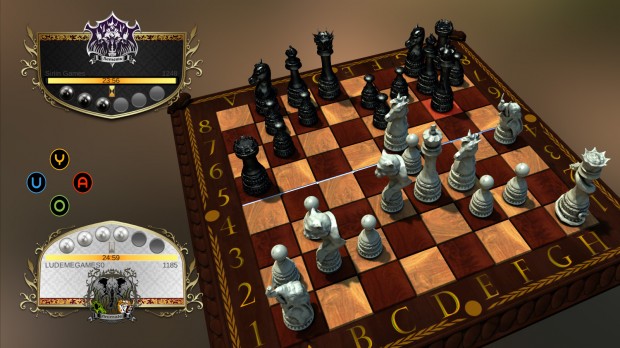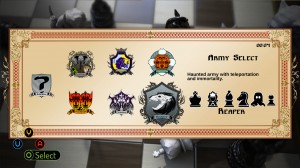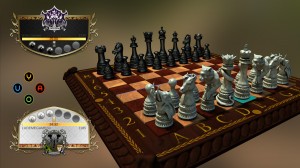Indie Rock: Chess 2: The Sequel
- Updated: 22nd Jan, 2014

The thing about Chess, as I’m sure you all know, is that it’s too easy to play. You can pick up Chess for the first time at the weekend and be ranked internationally by Friday. The only reason so few people are grandmasters is because no one wants to be seen in public playing such a baby game. That’s why they had to start programming computers to play it against people, it was just to bump up the numbers (machines aren’t known for their innate sense of personal shame).
Chess 2: The Sequel takes the base game of Chess and makes it actually good. It’s like Chess but if Chess was more like Street Fighter, which it sort of always was a bit. Street Fighter’s not really about punching a man or throwing a fireball at him until he has things to say about his fight money, it’s about putting your opponent in a position where they’re forced to make a decision that’s more advantageous to you than it is for them. Throw a fireball, they can only block it for so long until they die, so eventually they jump over it and you’re ready to punch them, but, instead, imagine two people have been moving Knights and Bishops around in an intricate little dance on a tacky monochrome disco floor.
When I say Chess 2 makes the base game more like Street Fighter, I mean that instead of two equally composed armies each player now has the choice of different pieces with different abilities. You’re still able to play with the traditional line up, but that’s like the Ryu on Ryu of Chess 2: The Sequel. Maybe that reference is a little too specific, if you don’t follow: pretend I just wrote “Boring”.
 My favourite class is the “Reapers”. Their version of the Queen can teleport anywhere on the map, but can only take pawns. To balance, the Rooks can also teleport most places on the map, but aren’t capable of taking anything. I think they’re used primarily to stop enemy pawns from moving forward, but just the ability for a piece to be anywhere on the field utterly changes the sort of considerations you have to make during a Chess match. It’s no longer figuring out the moves that the other side is likely to make given their current board formation, now the possibilities could be fuckin’ endless. Or, just, like, significantly more complex. There’s definately a limit to the spaces they can move. They can’t start moving off the board (yet).
My favourite class is the “Reapers”. Their version of the Queen can teleport anywhere on the map, but can only take pawns. To balance, the Rooks can also teleport most places on the map, but aren’t capable of taking anything. I think they’re used primarily to stop enemy pawns from moving forward, but just the ability for a piece to be anywhere on the field utterly changes the sort of considerations you have to make during a Chess match. It’s no longer figuring out the moves that the other side is likely to make given their current board formation, now the possibilities could be fuckin’ endless. Or, just, like, significantly more complex. There’s definately a limit to the spaces they can move. They can’t start moving off the board (yet).
The game’s also added “Midline Invasion”, which is a way to prevent Chess’ all too common stalemates and make the king a more active participant in the action. I always thought the king was bullshit, (in previous chess and during my primary school term on Henry VIII). The King’s role in OG Chess seemed like early social commentary through mechanics. He just hangs out not moving very fast and the game’s over if he’s cornered. In fixing this, Chess 2: The Sequel takes on a more royalist edge, giving the king his own ability to apply pressure and potentially change the flow of the game in your favour rather than being a drain on resources. Playing Chess 2: The Sequel becomes a lot like saying “well the money the royal family costs the taxpayer is basically made up for in tourism”.
 I’ve yet to see the proper benefit of Chess 2’s “Betting” system, where players can potentially swing the result of a fight using stones that they gain from taking other pieces. Each side has the choice of betting 1, 2 or 0 stones in a fight, then whoever bet the most wins. It seems like needless bluffing that adds just a tad more complexity than is actually necessary, but I’m sure it’s going to pay off in some miraculous way during an internationally ranked Chess 2: The Sequel Tournament (which I, hand to God, promise to compete in).
I’ve yet to see the proper benefit of Chess 2’s “Betting” system, where players can potentially swing the result of a fight using stones that they gain from taking other pieces. Each side has the choice of betting 1, 2 or 0 stones in a fight, then whoever bet the most wins. It seems like needless bluffing that adds just a tad more complexity than is actually necessary, but I’m sure it’s going to pay off in some miraculous way during an internationally ranked Chess 2: The Sequel Tournament (which I, hand to God, promise to compete in).
It’s out on Ouya now, and shh about this, but I don’t own an Ouya and have been playing it on my computer. I said Shh. Don’t tell anyone. It is a secret. The Chess Police are going to get me. I should be fine as long as I don’t move diagonally.

Follow Us!